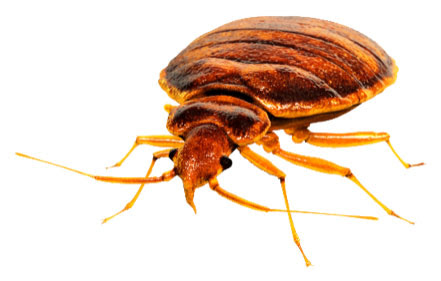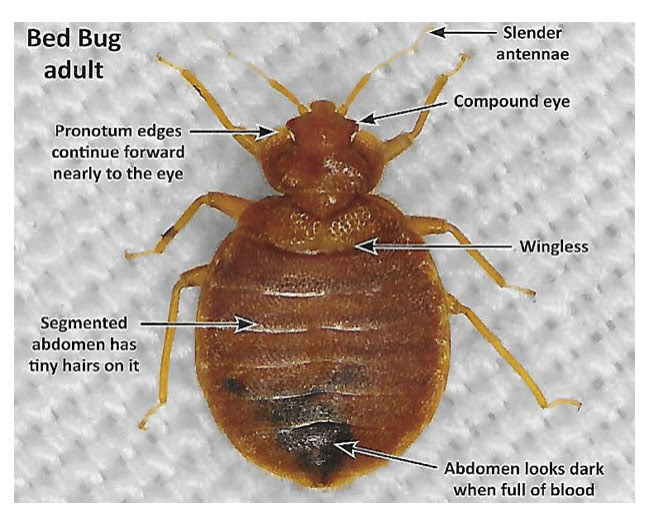


Hadamuscin Homes - Galion, Willard, and Mansfield Property Management, Remodeling, Bug Extermination
Bug Extermination
Call and get ride of those bugs today!
Do It Yourself Heat Treatment Systems
Self Treat With Heat!
Don’t wait until you have spent a fortune hiring professional services. You may not have a large maintenance staff. You might be a small property manager or you have discovered how easy it is to do it yourself.Enjoy the confidence of using the same equipment and training as the professionals. GreenTech Heat supplies equipment and full training options for all industries large and small. All the same with HhManagement!.
Why Self-Treat With GreenTech Heat?
 Heat treatments kill 100% of bed bugs and their eggs in just one treatment.
Heat treatments kill 100% of bed bugs and their eggs in just one treatment. Immediate, in-house response to any infestation saves thousands on regular pest control company treatments.
Immediate, in-house response to any infestation saves thousands on regular pest control company treatments. Treated rooms are only down for a few hours during treatment.
Treated rooms are only down for a few hours during treatment. No chemicals used with heat!
No chemicals used with heat!
Basic Guidelines To Bed Bug Heat Treatments

Every Living Organism Has A Thermal Death Point
This is a basic approach to performing a heat treatment.The same process for treating bed bugs will also kill, and in some cases, completely eradicate other organisms.
Regardless of the heat source, temperatures and run times must be achieved throughout the structure.
Let's Get Specific
Heat systems affecting heat treatment run times and methodology.- Electric heat is a closed system. It operates from within the structure being treated with heat.
With ePro electric heat systems, starting room temperatures raise by approximately 10˚F or every hour. However, the ambient room air temperature will increase at a faster and faster rate as the room temperature rises and recycles itself. It is the multiplying effect of air turnover with a closed system.
Electric heat requires power sources. Adding more electric heaters, will be more productive to your heat treatments. However, the power source becomes a growing challenge. Each ePro electric heater is 120v and requires 45 amps to run at 100% power. GreenTech portable Power Stations are used to plug into 240v power sources like electric range and A/C and can provide more 120v power to the ePro heaters. Check your available amperes.
Variables Do Apply
- Square feet: large or small space. The larger the area the longer heating time for all areas to reach lethal temperatures.
- Building materials: cement, steel, dry wall, etc. will affect the heating times. Cement floors and walls will take as much as 3 times the time due to the fact that cement acts as an insulator and can maintain cool temperatures with slowly changing thus requiring more heat time.
- Furnishings: lots of furniture will require more run time due to the amount of objects surface area needing to get to temperature and the obstacle of more furnishing for the heated air to travel through and around.
- Clutter: Piles of clothing and blankets are very important to move around and mix. The room air temperatures can be 130˚F and under the pile of clothing it could be 80˚F not lethal. No clutter, is recommended.
- Weather: heating in a desert or in high altitude with snow. Is it warm or hot when starting? Humidity and cold will take adjustments and more heat time.
- Degree of infestation: Identifying infestations early is key to control and is much easier to get a 100% kill. If the infestation is large and mature, basically way over due for treatment, you will need to take time to move objects, furniture, open all draws and closets and spend extra time prepping and allowing more time for longer heat penetration of the structure and furnishings.
- Starting temperature: Similar to weather but room temperature. Is the treatment beginning temperature at, for example: 90˚F or 40˚F?
Bed Bugs
General Information
Bed bugs are widespread and have been found in houses, apartments, hotels, schools, hospitals, dormitories and movie theaters. They use their straw-like mouth parts to suck blood from warm-blooded animals such as humans, bats, and birds. Adults are oval-shaped, flattened front to back, and wingless. At maturity, they are 4-5 mm long and 1.5-3 mm wide. They are light brown when hungry but after a feeding on blood, their abdomen looks bright red, red-brown, or blackish. Bed bugs may be mistaken for small cockroaches but unlike cockroaches, which scavenge human food, bed bugs feed only on blood. They remain hidden during the day and actively feed at night. Their bites are painless but the bite wounds can be extremely itchy for days later. If disturbed, alarmed, or crushed, they leave dark stains (fecal spots), often on sheets and bedding.

Life Cycle
Bed bugs have three stages in their life cycle: egg, nymph, adult. Adult females lay eggs on rough dry surfaces near their hiding places, either singly or in small clusters. One to four weeks later, the nymphs hatch from the eggs and seek a host animal from which to feed. As nymphs eat and mature, they outgrow their skin, grow a new skin layer (exoskeleton) beneath it, and shed the old one, a process called molting. Following each molt, the nymph is a little larger. After the fifth growth-molt cycle, usually 4-6 weeks later, the bed bug reaches full size and is an adult. The process of changing body forms while maturing is called metamorphosis.
 |
 |
Bed Bug Bites
At night, bed bugs travel from their hiding places to feed on sleeping host animals. They insert their long needle-like mouthparts into the skin, inject saliva which digests blood cells, and drink up the digested blood. As the abdomen fills with blood, it turns bright red, dark red-brown, or blackish. After feeding, they retreat to their hiding places. They typically feed every 5 – 10 days but can live up to 8 months without feeding.Unlike many insects that feed on human blood, bed bugs are not known to transmit (vector) any disease-causing bacteria or viruses (pathogens). Reactions to bed bug bites very among individuals. Many victims show no signs of bites. Others don’t realize they’ve been bitten until rash, redness, or swelling appears around the bite, sometimes with intense itching.
Detection
Bed bugs are active at night and are adept at hiding in dark places during the day. They most often hide in crevices and in spaces between mattresses and box springs, on bed frames and headboards, and between couch and chair cushions. They are less commonly found in dressers and nightstands, in and on luggage, in electrical outlets, and among clutter. Once they infest a room, they often travel to adjacent rooms.

Prevention and Control
Proper sanitation practices and diligence can help prevent bed bug infestation.- Inspect for bed bugs wherever you sit or stay. Eggs are tiny white ovals, bed bugs are brownish, shed skins are yellowish, and fecal spots black.
- If you may have been exposed to bedbugs, wash and dry your clothes on high heat, then run them through the dryer again for at least 20 minutes. Dry clean items that cannot be machine-dried. Place shoes and other non-washable items into sealable plastic bags and place them in the freezer overnight to kill bed bugs that might be on or in them.
- Never bring used or discarded furniture or clothing into your home unless it has been carefully inspected for bed bugs. Wash and/or freeze clothing and other items as described above.
- If you find bed bugs at home, heat is the most thorough, efficient chemical free method to use. Either conduct a heat treatment yourself or use a professional pest control service and request that they use heat. Chemicals require repeated visits to the site. It is not necessary to use chemicals where you live. Heat is clean and efficient.
- Other heat treatment benefits include removal of odors from cooking, smoking, animals, urine, and bacteria

